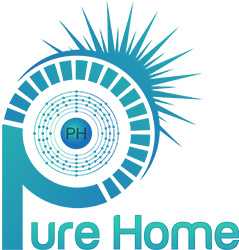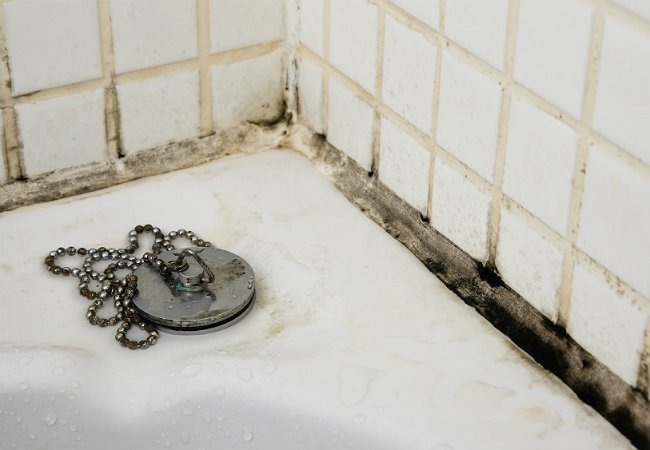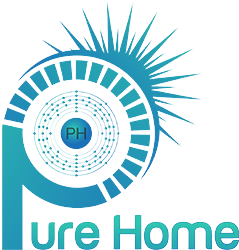What Causes Bathroom Mold And How To Prevent It
Are you tired of dealing with stubborn bathroom mold? From high humidity to poor ventilation, there are various factors that can contribute to mold growth in your bathroom.
We will explore the common causes of bathroom mold and provide you with practical tips on how to prevent it. Learn about the signs of bathroom mold, how to tackle it effectively, and the best products to use for removing mold.
Say goodbye to pesky bathroom mold with our expert advice!
Key Takeaways:
- High humidity and poor ventilation are major causes of bathroom mold growth.
- Regular cleaning and maintenance, as well as fixing leaks and improving ventilation, can prevent mold growth.
- Bleach, vinegar, baking soda, and commercial mold cleaners are effective products for removing bathroom mold.
What is Bathroom Mold?
Bathroom mold, also known as mold or black mold, refers to the growth of fungus in moist and damp environments such as bathrooms.
It thrives in areas with high humidity levels and poor ventilation, often appearing as dark spots or patches on walls, ceilings, or shower curtains. The main culprit behind bathroom mold is the combination of moisture and organic matter, providing an ideal breeding ground for mold spores to colonize and spread.
Black mold, a particularly toxic strain of mold, can pose serious health risks if left unchecked, causing respiratory problems and allergic reactions. Regular cleaning and proper ventilation are essential in preventing the recurrence of bathroom mold, helping maintain a healthy and hygienic living environment.
What Causes Mold Growth in Bathrooms?
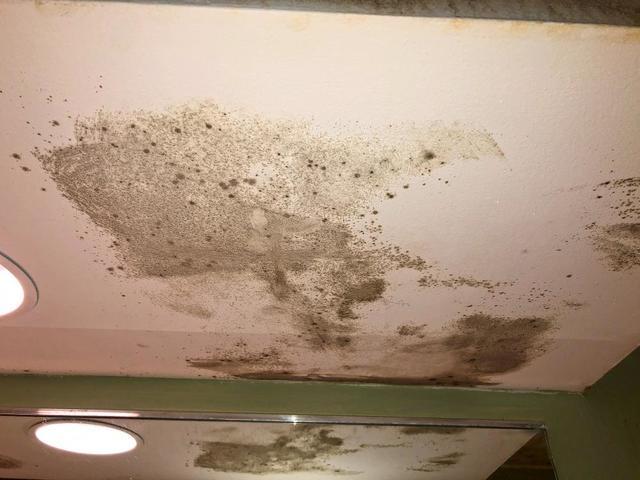
The bathroom shares some of the common crawl space problems that are primarily linked to moisture, poor ventilation, and the presence of spores in the environment.
Regarding controlling mold in bathrooms, managing moisture levels is key. High humidity, steam from hot showers, and water splashes can create the ideal environment for mold to thrive. Additionally, inadequate ventilation traps moisture in the space, providing mold with the necessary conditions to grow. The presence of mold spores in the air can also contribute to the spread of mold colonies, making it essential to address any existing infestations promptly. The frequent occurrence of condensation on surfaces in a bathroom can promote mold growth, emphasizing the importance of proper ventilation and air circulation.
High Humidity and Moisture
High humidity and moisture levels in bathrooms create an ideal breeding ground for mold, especially in areas near the shower or tub where condensation is common.
When hot steam from the shower meets the cool surfaces of walls and tiles, it quickly transforms into water droplets, providing the moisture necessary for mold spores to thrive.
Damp towels, wet mats, and neglected leaks further elevate the moisture levels in these areas, exacerbating the mold growth process.
The enclosed nature of bathrooms with limited ventilation traps this excess moisture, creating an environment ripe for mold proliferation.
Poor Ventilation
Inadequate ventilation leads to stagnant air in bathrooms, trapping moisture and promoting mold growth on surfaces and walls.
When ventilation is poor, the humidity in the air has nowhere to escape, creating the perfect environment for mold to thrive. Without proper air circulation, the moisture lingers, settling on various surfaces and seeping into porous materials.
This trapped moisture not only fosters the growth of unsightly mold but also poses health risks to inhabitants, aggravating respiratory issues and allergies.
Leaks and Water Damage
Leaks and water damage within bathroom fixtures or plumbing can introduce excess moisture, creating favorable conditions for mold colonization and expansion.
When leaks go unnoticed or untreated, they seep into walls, ceilings, and floors, providing the perfect breeding ground for mold growth.
Water damage weakens the structural integrity of the building, further exacerbating the problem by allowing mold spores to thrive and spread.
Continuous exposure to moisture from plumbing issues can lead to black mold infestations, posing serious health risks to occupants.
Lack of Cleaning and Maintenance
Neglecting regular cleaning and maintenance in bathrooms allows dust and grime to accumulate, providing nutrients for mold growth and increasing the risk of infestation.
It’s crucial to understand that continuous cleaning and maintenance play a vital role in preventing mold formation. By regularly removing dust and dirt buildup, you eliminate the potential food sources that mold thrives on.
- Cleaning surfaces with suitable products and tools not only helps maintain a pleasant environment but also combats the growth of harmful organisms.
- Maintenance tasks such as fixing leaks and ensuring proper ventilation further reduce the conditions favorable for mold infestation.
Taking proactive steps to keep your bathroom clean and well-maintained can significantly decrease the chances of mold development.
What Are the Signs of Bathroom Mold?
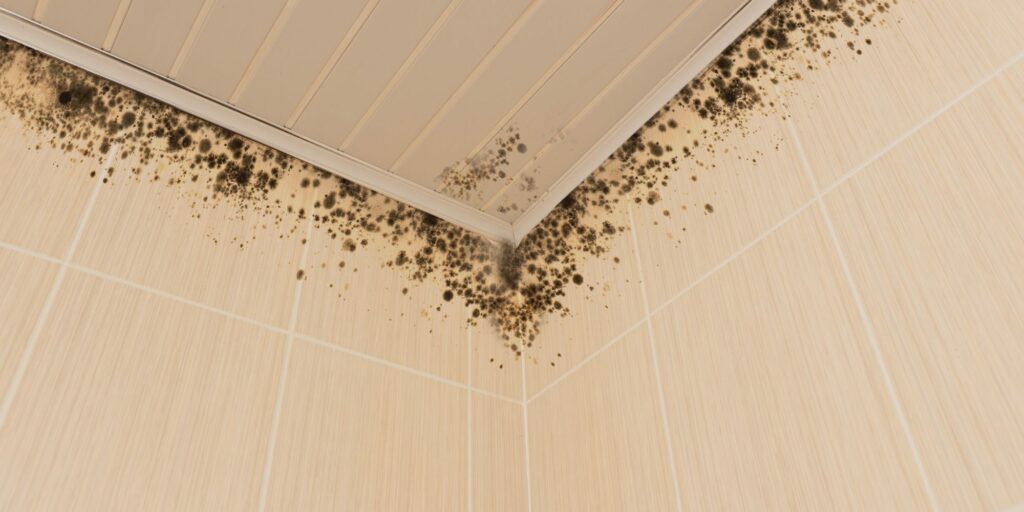
Detecting bathroom mold involves recognizing visible mold growth, musty odors, and potential allergic reactions triggered by exposure to mold spores.
Aside from these indicators, another factor that might signal the presence of mold in the bathroom is discoloration on surfaces such as walls or ceilings. This discoloration can range from black, green, or even pinkish hues, indicating different types of mold colonies taking hold in the damp environment. Peeling or cracked paint or wallpaper could also be a sign that mold is growing underneath these surfaces.
Visible Mold Growth
The presence of visible mold growth on surfaces and tiles in bathrooms indicates a significant mold infestation that requires immediate attention and remediation.
When mold starts to proliferate on surfaces and tiles, it not only poses a health risk but also indicates potential structural damage to the building if left unaddressed. The visible mold growth serves as a warning sign that there are conducive conditions for mold to thrive, such as moisture and organic matter present in the bathroom. It is crucial to understand that mold can spread rapidly, affecting not just the aesthetics but also the indoor air quality of the space.
Musty Odor
A musty odor permeating from bathrooms often indicates the presence of hidden mold colonies, underscoring the need for thorough inspection and remediation.
When left unchecked, mold can pose serious health risks, especially for individuals with respiratory issues. The musty smell can signal not only the growth of mold but also the potential for structural damage to the building.
To effectively address this issue, it is crucial to identify and eliminate the source of the musty odor. This may involve checking for leaks, improving ventilation, and addressing any areas with excessive moisture. Professional mold remediation services may be necessary for extensive cases, emphasizing the importance of taking proactive measures against mold growth.
Allergic Reactions
Allergic reactions such as respiratory problems and other health issues may manifest in individuals exposed to bathroom mold, necessitating immediate remediation to safeguard personal health.
Regular exposure to mold in bathrooms can lead to chronic respiratory conditions like asthma and bronchitis, as well as exacerbate existing respiratory ailments. Mold spores are airborne and can easily be inhaled, triggering allergic reactions in susceptible individuals. Individuals with compromised immune systems or respiratory conditions are particularly at risk of developing severe health complications due to prolonged mold exposure.
It is crucial to maintain proper ventilation and address any signs of mold growth promptly to prevent these health risks.
How to Prevent Bathroom Mold?
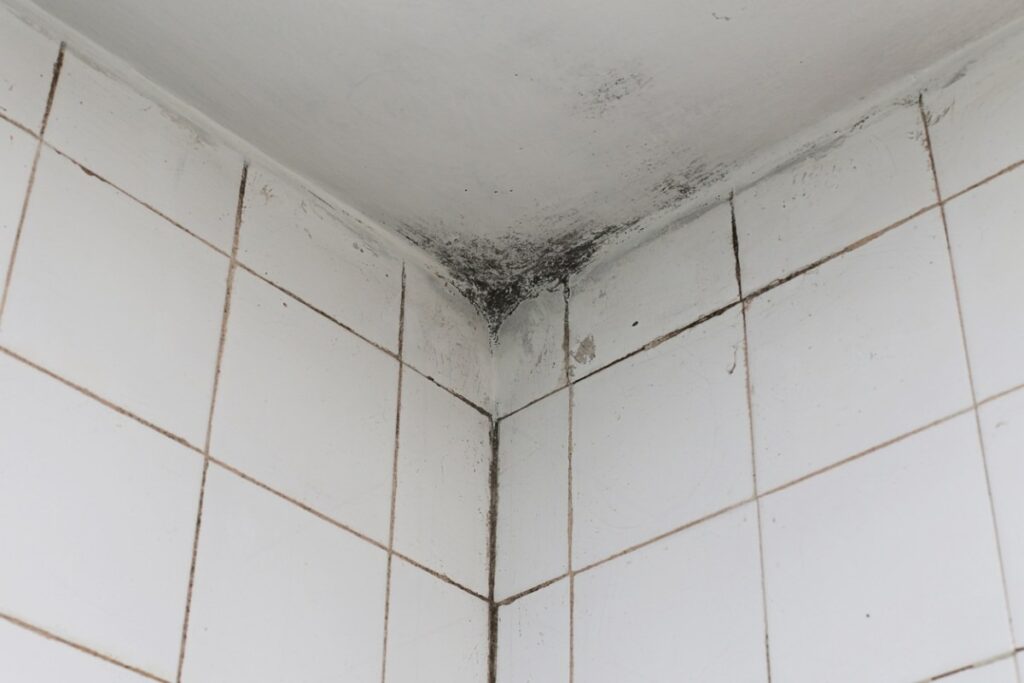
Preventing bathroom mold entails controlling humidity levels, improving ventilation, addressing leaks, and practicing regular cleaning and maintenance routines.
Effective moisture control plays a critical role in mold prevention, as damp environments create the ideal conditions for mold to flourish. Installing exhaust fans, opening windows, or using dehumidifiers can help reduce excess moisture in the air. Promptly fixing any leaks in plumbing fixtures or pipes can prevent water from accumulating and creating a breeding ground for mold spores. Consistent cleaning with mold-inhibiting products, focusing on commonly affected areas like shower curtains, grout, and walls, is also essential in keeping bathroom mold at bay.
Control Humidity and Moisture
Controlling humidity and moisture in bathrooms through proper ventilation and using dehumidifiers helps prevent the conditions conducive to mold growth.
Humidity and moisture are key elements that create an ideal breeding ground for molds. When water vapor in the air comes in contact with cool surfaces, it leads to condensation, providing the necessary moisture for mold spores to thrive.
Managing these factors effectively is crucial in mold prevention. Ventilation systems play a vital role in circulating air, reducing humidity, and preventing stagnant, moist conditions. Dehumidifiers, on the other hand, extract excess moisture from the air, creating an inhospitable environment for mold growth.
Improve Ventilation
Enhancing ventilation in bathrooms by installing exhaust fans or opening windows facilitates air circulation, reducing moisture buildup and inhibiting mold growth.
Proper ventilation is crucial in preventing mold formation in bathrooms. By ensuring adequate air flow, you can significantly lower the chances of mold thriving in humid environments.
Improving bathroom ventilation not only enhances the overall air quality but also helps in maintaining a healthy environment. Installing exhaust fans is an effective method to promote airflow and minimize moisture retention. Utilizing windows to allow natural ventilation can further improve air circulation and reduce the risk of mold growth. It is essential to prioritize proper ventilation to create a dry and mold-resistant bathroom space.
Fix Leaks and Water Damage
Promptly repairing leaks and addressing water damage in bathrooms help eliminate excess moisture sources and prevent mold infestations from developing.
Timely leak repairs play a crucial role in maintaining a healthy indoor environment, as unchecked leaks can lead to hidden moisture buildup, creating optimal conditions for mold growth. By fixing leaks promptly, you are not only preventing water damage but also stopping the spread of mold spores.
Proper water damage remediation involves thoroughly drying affected areas to remove all traces of moisture, ensuring that mold has no opportunity to take hold and propagate. Taking these steps early on can save you from more extensive and costly mold remediation measures in the future.
Regular Cleaning and Maintenance
Regular cleaning and maintenance of bathroom surfaces, including grout and walls, removes potential mold food sources and reduces the likelihood of mold growth.
Consistent cleaning practices play a crucial role in deterring mold by eliminating dust and dirt buildup, which are common nutrients for mold spores.
Regularly wiping down surfaces with mildew-resistant cleaners can help prevent mold colonization. Ensuring proper ventilation in the bathroom can aid in controlling humidity levels, making the environment less conducive to mold growth.
By incorporating these maintenance routines into your cleaning regimen, you create a hostile environment for mold to thrive, ultimately safeguarding your home against potential mold issues.
What Are the Best Products for Removing Bathroom Mold?
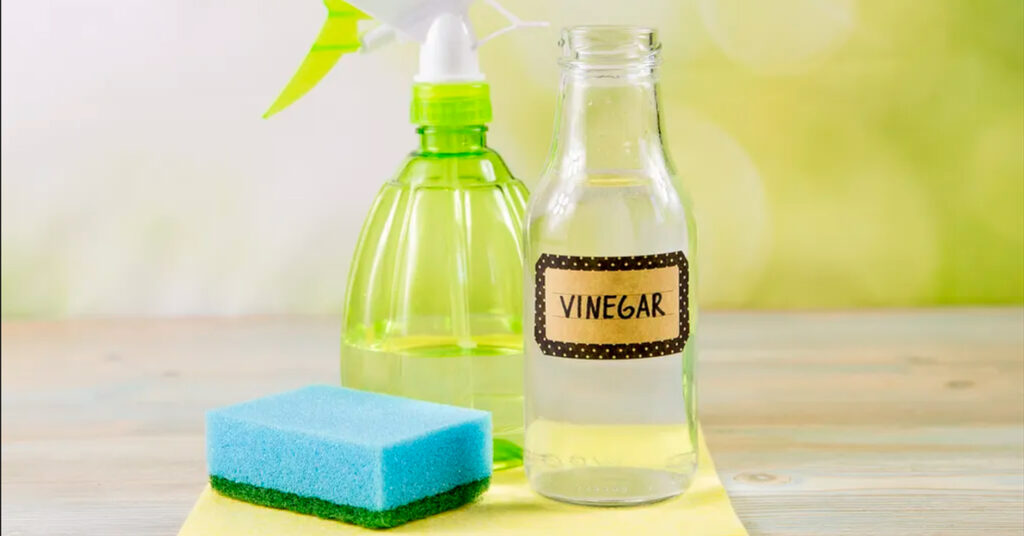
There are several reasons to never DIY a mold removal, but mold can be tackled by common products like bleach, vinegar, baking soda, and commercial mold cleaners are widely used due to their mold-fighting properties.
Each of these products has its own unique way of combating mold infestations.
- Bleach is known for its strong disinfecting properties that can effectively kill mold on hard surfaces.
- On the other hand, vinegar is a natural and non-toxic alternative that can help prevent future mold growth.
- Baking soda acts as a mild abrasive cleaner and deodorizer that can scrub away mold stains and odors.
- When dealing with stubborn mold, specialized commercial mold cleaners come into play, offering stronger formulations designed to eradicate mold effectively.
Bleach
Bleach is a potent disinfectant commonly used to combat mold in bathrooms, effectively killing mold spores and preventing regrowth.
Its antimicrobial properties make it a go-to solution for households dealing with stubborn mold infestations. The active ingredient in bleach, sodium hypochlorite, penetrates the mold structure and disrupts its cellular functions, leading to the destruction of the mold. Not only does bleach eliminate existing mold, but it also acts as a preventive measure against future mold growth. By creating an inhospitable environment for mold spores, bleach inhibits their ability to thrive, thus reducing the likelihood of mold resurgence. Regularly treating affected areas with bleach can significantly reduce the risk of mold-related health issues and property damage.
Vinegar
Vinegar, a natural and eco-friendly solution, is effective in eliminating mold in bathrooms by breaking down mold particles and hindering further growth.
When vinegar is applied to affected areas, its acetic acid content disrupts the cell structure of mold, making it unable to grow or spread. Not only does it eradicate existing mold, but it also helps to prevent a re-infestation due to its anti-fungal properties. Its acidic nature creates an inhospitable environment for mold, making it a sustainable choice for those looking to combat mold without harsh chemicals. Vinegar is cost-effective and readily available, making it a convenient option for households seeking an environmentally conscious cleaning solution.
Baking Soda
Baking soda, known for its mild abrasive properties and deodorizing effects, is utilized to scrub and absorb moisture in mold-affected areas of bathrooms.
When tackling stubborn mold stains, a paste of baking soda and water can be applied to surfaces, allowing it to sit for a while before scrubbing to lift away the grime gently. Not only does this method effectively remove mold build-up, but the absorbent nature of baking soda also helps in reducing musty odors commonly found in damp spaces. Its dual-action benefits make baking soda a versatile and eco-friendly solution for maintaining a fresh and clean environment free from mold.
Commercial Mold Cleaners
Commercial mold cleaners offer specialized formulations designed to effectively target and eliminate mold infestations in bathrooms, providing convenience and enhanced mold-fighting capabilities.
One of the key advantages of using commercial mold cleaners is that they are specifically engineered to combat the stubborn growth of mold, which is a common issue in damp and humid environments such as bathrooms. These cleaners are tailored to penetrate deep into surfaces, ensuring thorough removal of mold spores and preventing regrowth. The efficacy of commercial mold cleaners saves time and effort by swiftly eradicating mold, thus reducing the need for frequent cleaning and maintenance.
Frequently Asked Questions about What Causes Bathroom Mold And How To Prevent It
What causes bathroom mold and how to prevent it?
Mold thrives in warm, damp environments – making bathrooms a perfect breeding ground. This, combined with poor ventilation and moisture buildup from daily activities like showering and bathing, creates the ideal conditions for mold growth.
Why is it important to prevent bathroom mold?
Bathroom mold can cause respiratory issues, allergies, and skin irritation. In severe cases, it can even lead to serious lung infections. It is important to prevent mold growth in bathrooms to maintain a safe and healthy environment.
How can I prevent mold growth in my bathroom?
To prevent mold growth in your bathroom, make sure to keep the space well-ventilated, fix any leaks or moisture issues promptly, and regularly clean and dry surfaces that are prone to moisture buildup.
What are some common mistakes that can lead to bathroom mold?
Yes, some common mistakes include leaving wet towels or bathmats on the floor, not properly sealing shower tiles, and using wallpaper or carpeting in bathrooms, which can trap moisture and promote mold growth.
Are there any natural remedies for preventing bathroom mold?
Yes, there are several natural remedies for preventing bathroom mold, such as using vinegar or tea tree oil to clean and disinfect surfaces, as well as keeping a plant like aloe vera or spider plant in the bathroom, which can absorb excess moisture.
How often should I check for bathroom mold?
It is recommended to regularly check your bathroom for signs of mold, especially in areas that are prone to moisture buildup. This could be as often as once a week, depending on the level of humidity in your bathroom and the effectiveness of your prevention methods.
